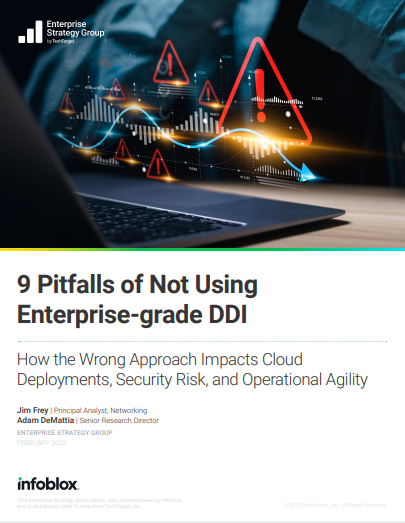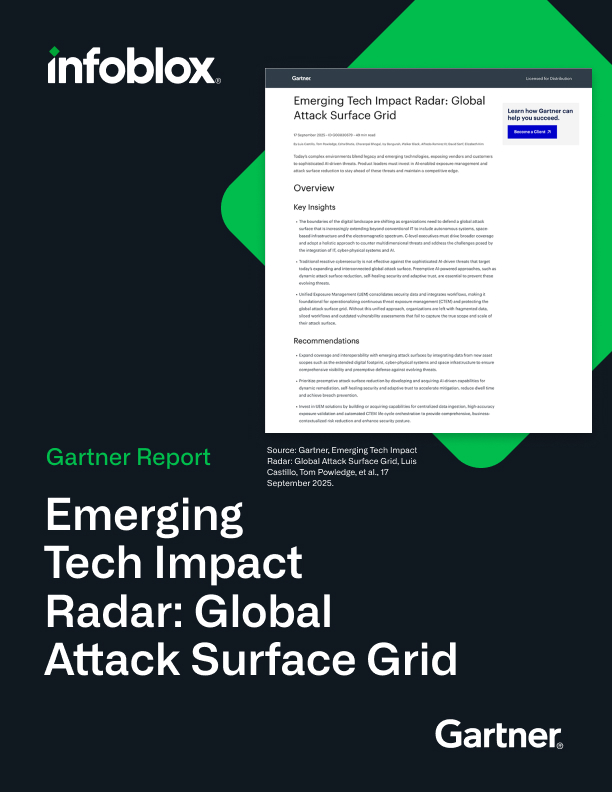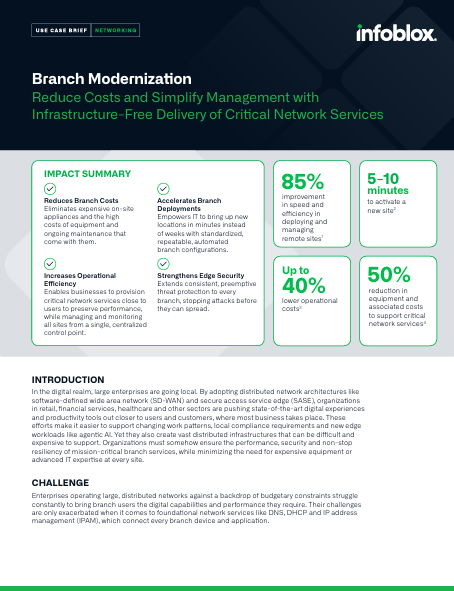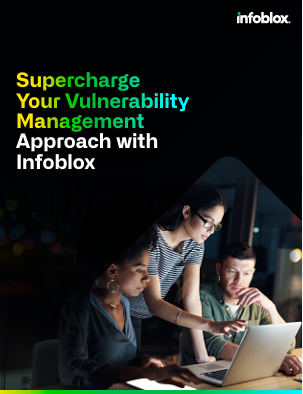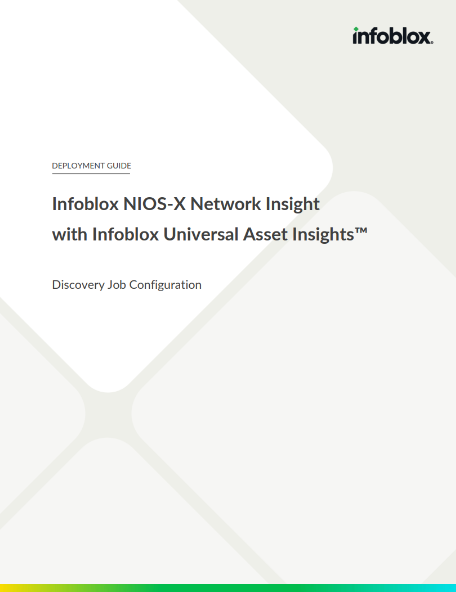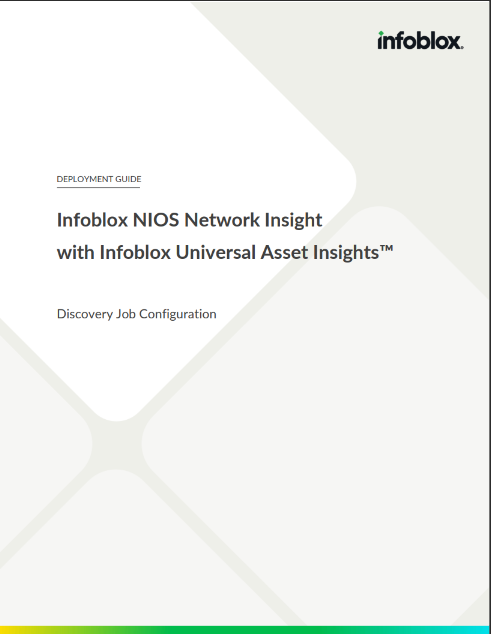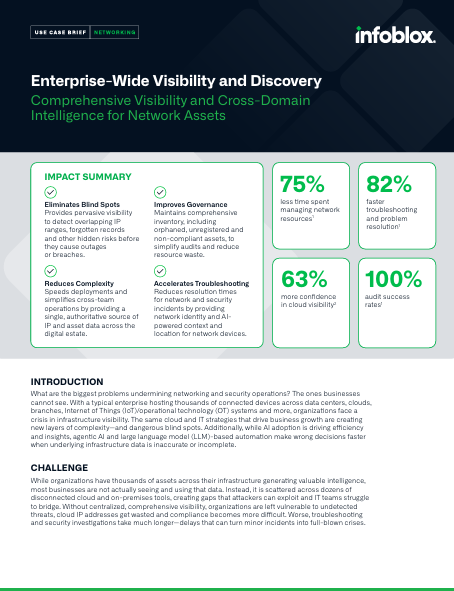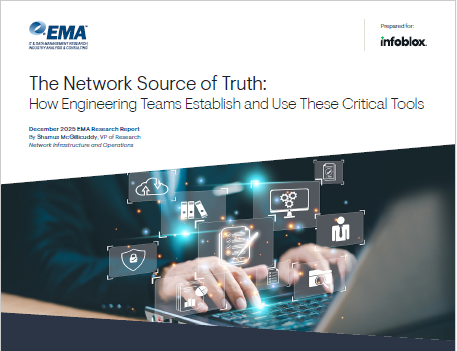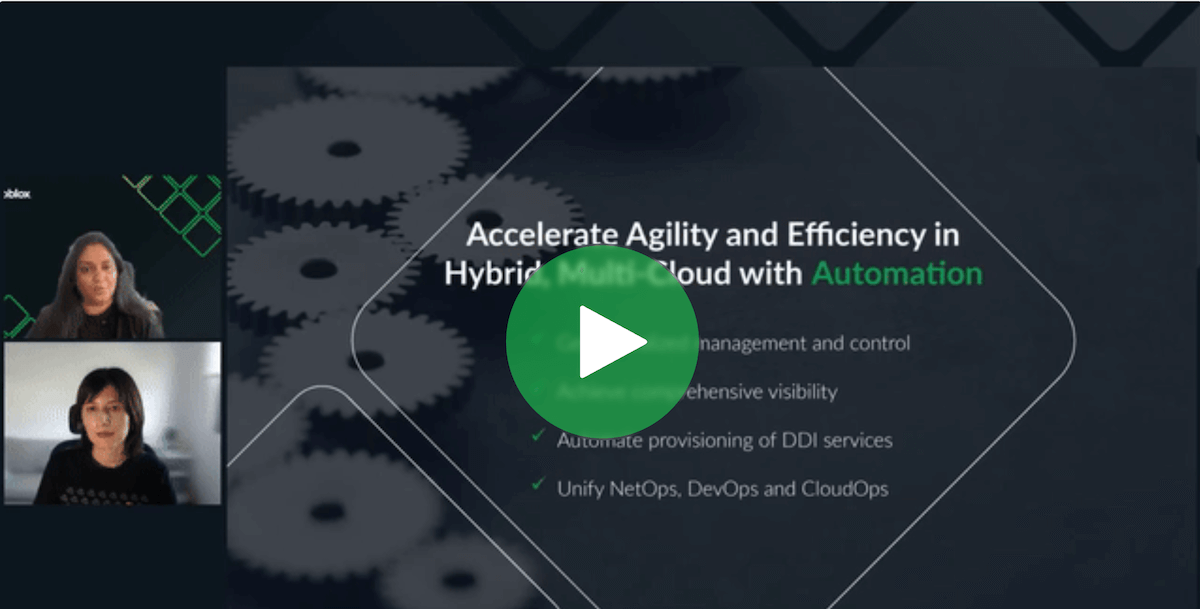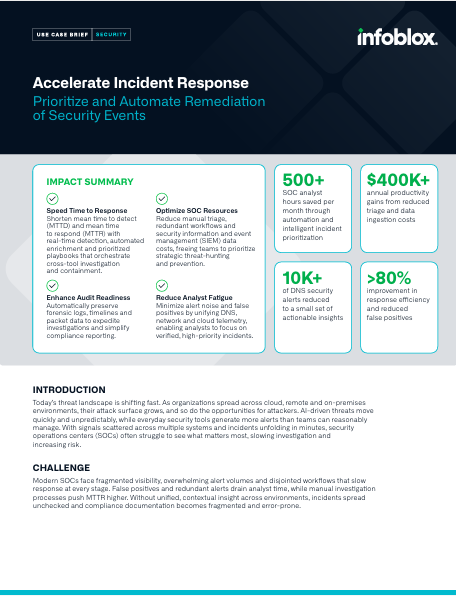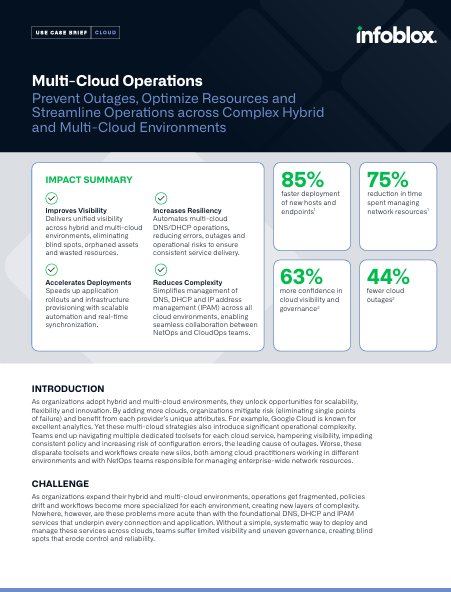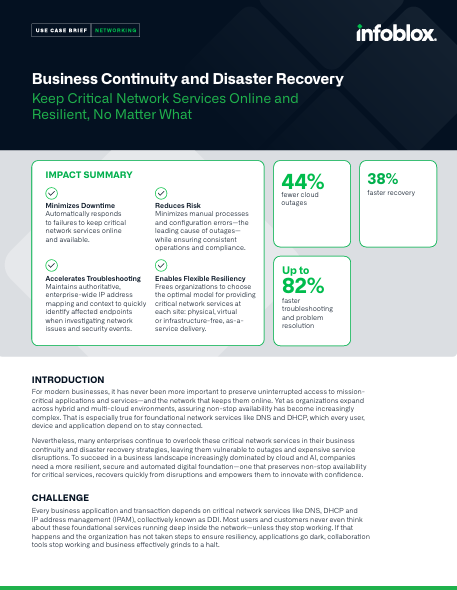Resources
This comprehensive collection of information and illustrative resources provides a full overview of Infoblox’s array of network control solutions.
Filter by:
{{ products_label }}
- {{ term.label }}
{{ solutions_label }}
- {{ term.label }}
{{ industries_label }}
- {{ term.label }}
{{ resource_types_label }}
- {{ term.label }}
Sort by:
{{ sort_label }}
- Date
- Title
Branch Modernization
In the digital realm, large enterprises are going local. By adopting distributed network architectures like software‑defined wide area network (SD‑WAN) and secure access service edge (SASE), organizations in retail, financial…Use Case Brief
Supercharge Your Vulnerability Management Approach with Infoblox
Today’s IT environments are complex with the rapid growth of cloud services, IoT devices and hybrid infrastructures. This complexity creates fragmented and dynamic networks that are challenging to manage and…eBook
Cloud Migration/Transformation
In the drive to get faster, leaner and more competitive, organizations are moving more of their enterprise IT stack to the cloud. As businesses progress along their cloud journeys (whether…Use Case Brief
Infoblox NIOS-X Network Insight with Infoblox Universal Asset Insights™
This document is a continuation of the NIOS Network Insight (NI) Deployment Guide and is intended for customers who are using NIOS-X. It builds upon the concepts and workflows introduced…Deployment Guide
Infoblox NIOS Network Insight with Infoblox Universal Asset Insights™
Network Insight (NI) is Infoblox’s advanced discovery and visibility solution that extends the core DDI (DNS, DHCP, and IP address management) capabilities. Its primary purpose is to deliver enhanced visibility,…Deployment Guide
Enterprise-Wide Visibility and Discovery
What are the biggest problems undermining networking and security operations? The ones businesses cannot see. With a typical enterprise hosting thousands of connected devices across data centers, clouds, branches, Internet…Use Case Brief
The Network Source of Truth: How Engineering Teams Establish and Use These Critical Tools
Over the last decade, a new class of management tool, the network source of truth (NSoT), slowly emerged in the world of network operations.Analyst Report
The Automation Advantage: Accelerating Agility and Efficiency in the Hybrid, Multi-Cloud Era
Explore how automating critical network services — DNS, DHCP and IP address management (DDI) transforms your infrastructure from a manual bottleneck into a strategic enabler.Webinar
Simplify and Secure Hybrid Networking with Google Cloud and Infoblox
Discover how Google Cloud and Infoblox make your hybrid network smarter, more secure and much simpler, from the edge to the cloud.Videos
Accelerate Incident Response
Today’s threat landscape is shifting fast. As organizations spread across cloud, remote and on-premises environments, their attack surface grows, and so do the opportunities for attackers.Use Case Brief
Multi-Cloud Operations
As organizations adopt hybrid and multi-cloud environments, they unlock opportunities for scalability, flexibility and innovation. By adding more clouds, organizations mitigate risk (eliminating single points of failure) and benefit from…Use Case Brief
Business Continuity and Disaster Recovery
For modern businesses, it has never been more important to preserve uninterrupted access to mission critical applications and services - and the network that keeps them online. Yet as organizations…Use Case Brief

